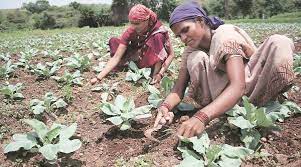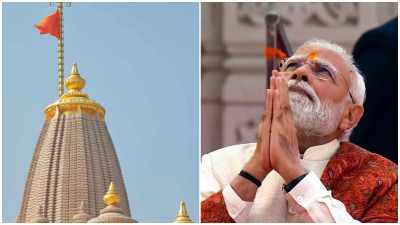Farmers with up to two hectares of land holding have emerged as the frontrunners in insuring their crop under the Pradhan Mantri Fasal Bima Yojana (PMFBY). Technically called small farmers, they emerged as the largest group opting for the scheme across the country ahead of marginal farmers (cultivators with up to or less than one hectare of land).
The crop insurance scheme has proven to be a lifesaver for farmers due to the constant hazard of erratic climate conditions faced by them. Cultivators enrol in the scheme by paying a minor portion of the premium with the state and the Centre footing the major portion of the premium.

In case of crop loss, the insurance companies compensate the farmer to tide over their financial loss. At present, the scheme is optional for both loanee and non-loanee farmers. Thus, a soyabean farmer in Maharashtra can claim compensation up to Rs 57,267 per hectare by paying a premium of only Rs 1,145.35.
An analysis of the 2022-23 Kharif crop data by The Indian Express shows an overwhelming number of small farmers opting for the scheme. The percentage of marginal and large landholders is comparatively less. According to the definition, cultivators with less than one hectare of land are classified as marginal farmers while those holding up to two hectares are termed small farmers.
Despite being the largest landholders in the country, the enrolment of marginal farmers is way behind that of small farmers in the scheme, which allows a comfortable cushion against economic loss. For agriculturally important states like Maharashtra, only 10.14 per cent of the enrolment was seen from the marginal farmers while 83.12 per cent of enrolment was seen from small farmers.
In Madhya Pradesh, 14.53 per cent of marginal farmers opted for PMFBY while it was 52.34 per cent for small farmers. Rajasthan recorded 20.27 of marginal farmers opt for the central scheme while 49.83 per cent of small farmers opted for the same. In Uttar Pradesh, the scheme saw participation from 32.23 per cent of marginal farmers and 59.21 per cent of small farmers. In Odisha, the figures stood at 16.29 per cent and 78.79 per cent, respectively. Other states also displayed a similar trend.
Sangeeta Shroff, professor and head of Agro Economics Research Center at Pune-based Gokhale Institute of Politics and Economics, pointed out that farmers, who see risk in their crops opt for insurance cover.
Story continues below this ad
“Thus, growers in Marathwada and Vidarbha, who grow cotton and soyabean are more enthusiastic about insuring their crops rather than the paddy growers of Konkan. The former sees more risks from natural conditions and thus insurance cover helps them cushion their losses,” she said.
The crop insurance scheme has seen sustained criticism from farmers and political leaders alike.
Leaders across the political parties called for reforms while states like Gujarat have even moved out of the scheme.
In this Kharif season, 19 of the 34 states are implementing this scheme while others are doing it on their end. Even Maharashtra has tweaked the scheme to ensure insurance companies return a portion of the premium collected in case compensation is not paid to a certain fixed cut-off limit.
Story continues below this ad
Lying at the base of the land-holding pyramids, marginal farmers are hit the hardest in case of an economic loss so their enrolment for crop insurance is low, say experts.
Ajit Nawale, state secretary of the All-India Kisan Sabha — the farmer’s wing of CPI(M), said, “Marginal farmers being lowest at the economic ladder often fail to raise enough capital to finance their need for seed, fertilizer etc. So, it is natural they do not enrol for the insurance as well.”
“Since, the scheme has become now become optional, more and more farmers are opting out of it. States like Gujarat have even opted out of the scheme. The yogna needs to be relooked,” he said.









